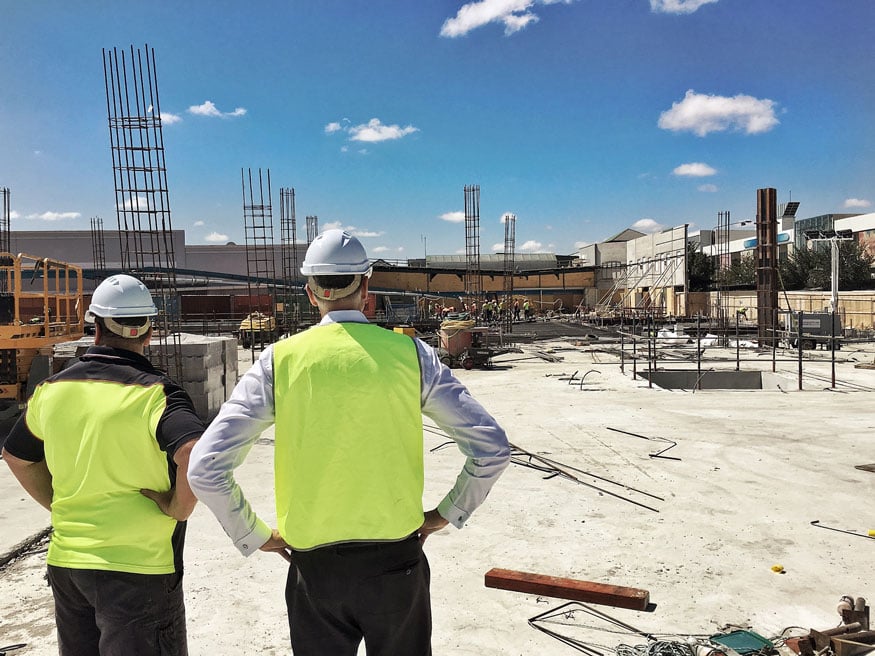Client Spotlight | Lifeblood
DCWC supports Lifeblood's growth ambitions by providing Quantity Surveying services across their national donor centre network. We're excited to highlight our ongoing role in expan.....
Read More →DCWC supports Lifeblood's growth ambitions by providing Quantity Surveying services across their national donor centre network. We're excited to highlight our ongoing role in expan.....
Read More →Get the latest trends and brand updates delivered straight to your inbox.
Media Contact:
Laura Davies
+61 402 456 902
Laura.Davies@dcwc.com.au
The most critical part of completing a quality infrastructure development on time and to brief is detailed project planning. Breaking down initial and ongoing expenses and comparing them to your estimated timelines and budget sets you on the road to success.
But what’s the best way of estimating these costs?
The first principles estimating method
‘First principles’ thinking breaks down complex problems into basic, constituent elements and then reassembles them from the ground up in the most logical and effective way possible. This reverse engineering allows individuals to see the linear connections between different elements and assess which of these are essential and which are superfluous. It also helps project managers analyse the processes that connect different elements and the individuals involved in the procedures. Users can then consider how to streamline or improve these first principles.
To discover your first principles, you need to consider what project elements are truly foundational. You cannot deduce first principles from another proposition - by their nature, these elements stand alone. If an element can be proven as a scientific fact, it’s considered a first principle. This form of thinking is designed to restrict individuals from relying on precepts when performing tasks, and instead use logical reasoning to find a more effective means of completing a process.
Using first principle cost estimation makes it easier to see your project’s core elements.
Department of Infrastructure and Regional Development Base Cost Estimation guidelines specifies that first principles estimating requires operators to account for the expense of each item in a work breakdown structure. Dividing an infrastructure project into these basic principles helps operators prioritise the most important elements and account for cost variables in isolation.
For high-value, high-risk projects in particular in civil engineering, it is pivotal to identify costs for labour, plant and materials individually. Driven by each project’s unique locations and situations, resources are calculated with their own unique productivities that feed into the above three resource categories.
A practical example within an infrastructure project would be a factor such as the steel materials you require for construction. The chemical properties and the production of these assets is an unchanging element. However, factors such as availability and productivities of downstream labour and plant are all variables that can be changed due to the unique site parameters. This prevents rote processes and blind rate applications.
This rational thinking has been used by figures throughout history, from the philosopher Aristotle to entrepreneur Elon Musk as a means of replacing analogy-based reasoning with ordered, linear thought. Many individuals aren’t able to apply this theory to their project work without experience. To help you with better applying first principles estimating, here are the mistakes to watch out for.
Common mistakes when applying first principles thinking often compromise how effective the school of thinking is.
 Estimating an infrastructure projects’ first principles is easy when you avoid these common issues:
Estimating an infrastructure projects’ first principles is easy when you avoid these common issues:
1) Not having a clear understanding of the project’s overall aims
Before you estimate a project’s first principles, you need to understand the development’s intention. If you don’t understand why the final structure is being built, it will be challenging to estimate the costs and timeframes associated with constructing it.
Take Elon Musk’s SpaceX project as an example. When he developed the program, Elon knew what his rockets would be used for and why he wanted to develop them. Knowing the ‘what’ and ‘why’ made formulating the ‘how’ simpler. Instead of simply repeating what other projects have done before, first principles helped Musk be more creative with how he made the project as efficient as possible.
2) Not adjusting project fees to meet first principle estimating
Many companies claim they use first principles estimating techniques, but do they actually? First principles can only be applied if a company understands various productivities of its resources. The construction industry in recent years has been plagued by businesses underestimating the complexities of large infrastructure projects. A combination of laziness and construction methodology incompetence has lead companies to blindly apply benchmarking rates.
It’s extremely important that each project is analysed on its own merits. Interrogations need to be made on a project site and other relevant factors such as, but not limited to:
 Applying lessons from past infrastructure projects improves first principle estimating.
Applying lessons from past infrastructure projects improves first principle estimating.
3) Not applying learning from past projects
A central part of the first principles philosophy is using prior knowledge of past project risks, costs and delays to separate first principle-components from associated elements. Use your experiences from other projects to assess if there are better ways of performing the same tasks.
As first principles estimating is driven by productivities, a time element needs to be interrogated to drive resources to perform the works. Learning from past experiences where lost of time was encountered, and the underestimating of loss of productivities can improve future situations.
Key summary points
Under the Department of Treasury and Finance’s ‘Preparing Project Budgets for Business Cases Technical Guide’ it is highly advised that a robust estimating methodology be employed. This can only be achieved through first principles estimating.
Want to learn more about leading cost estimation and infrastructure budgets?
DCWC’s specialist infrastructure team boasts a collective wealth of insight into development dos-and-don’ts - reach out today to pick up some of this expertise yourself!
DCWC acknowledges Aboriginal and Torres Strait Islander peoples as the First Peoples of this nation. We proudly recognise Elders past and present as the Traditional Owners of the lands on which we work and live.

© 2023 Donald Cant Watts Corke. All rights reserved | Privacy Policy